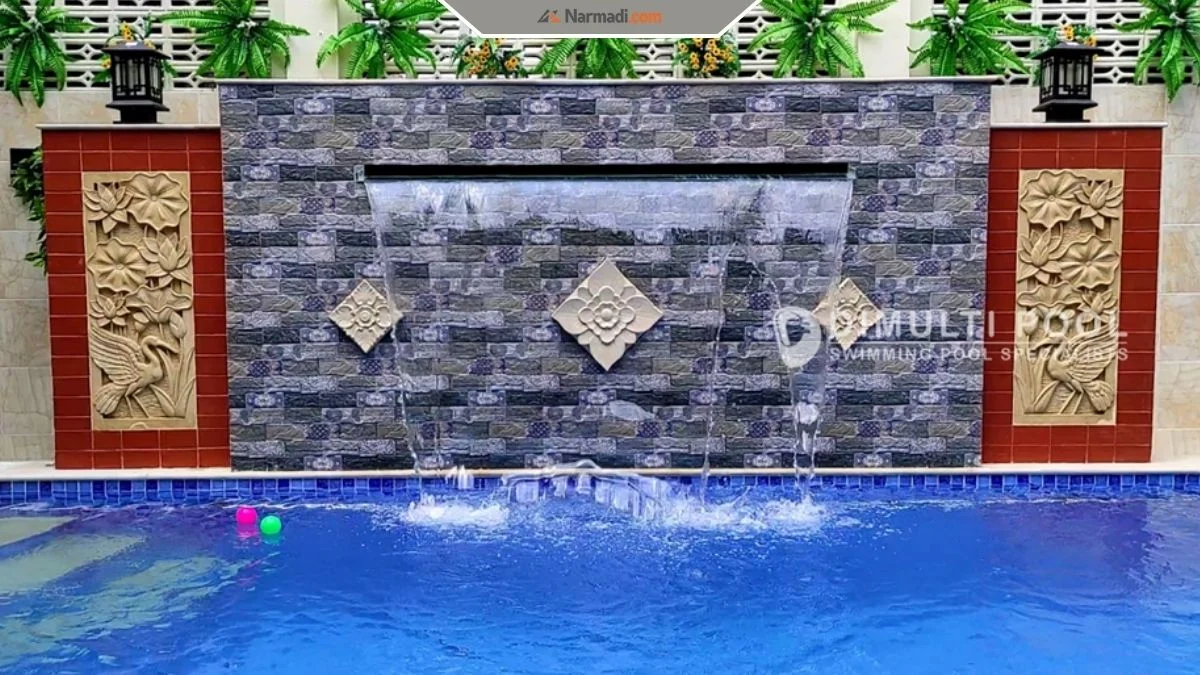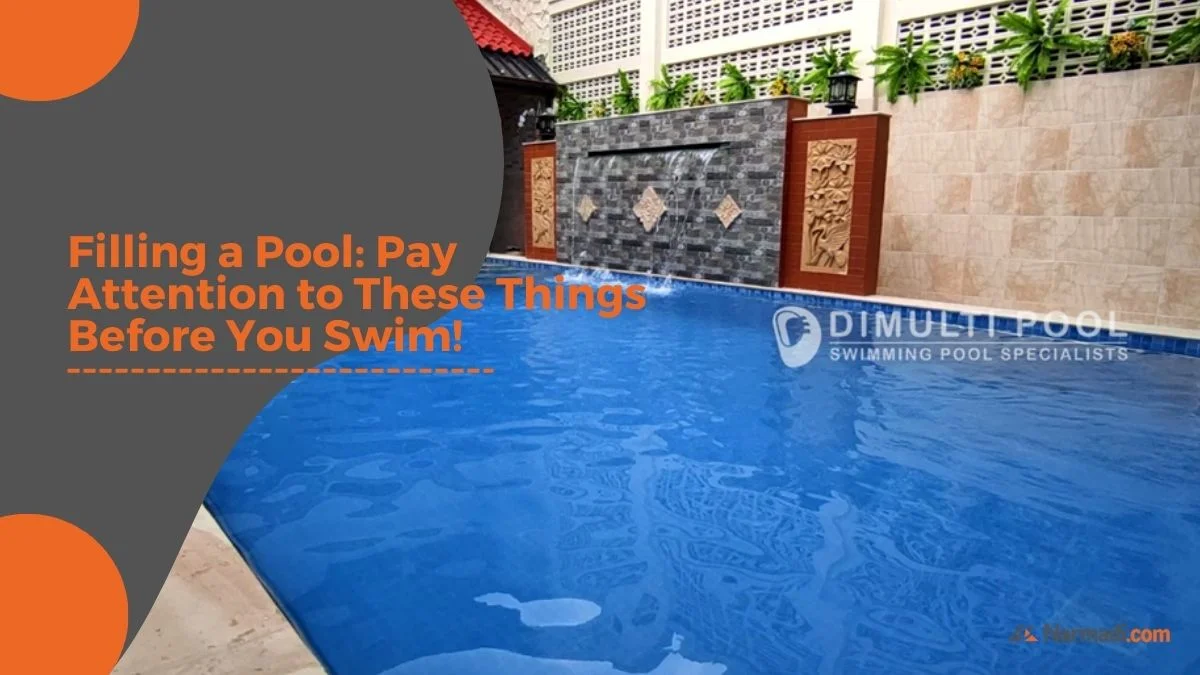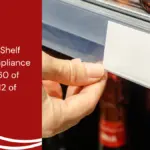Having a new swimming pool is indeed a fantastic feeling, right? And we sure understand the urge to just dive in and enjoy your newly constructed swimming pool.
But wait a second, before even filling up your swimming pool with water, there are few things that you need to pay attention to.
What are they? Let’s dive into the things you need to pay attention to before filling a pool with water that we’ve prepared just for you!
Also Read
Table of Contents
Things You Need to Address Before Filling a Pool With Water

1. Clean Your Pool Thoroughly
Before you even think about filling a pool with water, the very first step is to thoroughly clean all sides of the swimming pool.
This is a crucial part of the setup process that ensures your pool is not only safe but also ready for enjoyment.
Once the construction is complete, it’s common for various types of debris to linger—everything from dirt to residual plaster and cement can accumulate in the pool.
Moreover, if your swimming pool is placed outdoors, the chances of getting dirt are even higher.
These materials can affect both the appearance and the quality of the water, making it essential to address them before adding any water.
Start by inspecting the interior surfaces of the pool. Look for any stubborn stains or debris that may have settled during construction.
Use a soft brush or sponge to gently scrub the surfaces, paying particular attention to corners and seams where dirt tends to accumulate.
For tougher residues, consider using a diluted vinegar solution or a specialized pool cleaner. Avoid harsh chemicals that might damage the pool’s surface.
Rinse thoroughly after cleaning to ensure no cleaning agents are left behind.
2. Clean the Natural Stone of Your Swimming Pool
The next thing to do before filling a pool with water is to clean the natural stone used in your swimming pool.
Usually, the natural stones are used in the pool coping to increased traction and reduces the chance of slipping thus increasing the safety.
However, due to their coarse and textured surfaces, cleaning natural stone can be a bit more challenging than cleaning the smooth interiors of the pool.
The rough texture tends to trap dirt, grime, and organic material, making thorough cleaning crucial.
This process typically requires more time and effort. Start by using a broom or a leaf blower to remove loose debris like leaves and dirt from the stone surfaces.
Next, prepare a gentle cleaning solution—mix warm water with a mild detergent or a specialized stone cleaner. Avoid acidic or abrasive cleaners, as they can damage the stone.
Using a stiff-bristled brush, scrub the stone surfaces, focusing on any areas that appear particularly stained or dirty.
Be sure to get into the crevices, as this is where grime often accumulates. After scrubbing, rinse the stones thoroughly with clean water to ensure all cleaning solution is removed.
Also Read: “Leaking Swimming Pool Repair By Dimulti Pool“
3. Thoroughly Check The Water Piping System
As we all know, swimming pools rely on a piping system to circulate water, ensuring a clean and inviting environment for swimmers.
Therefore, before you fill your newly constructed pool with water, it’s essential to thoroughly check the entire piping and water circulation system.
The piping system is generally divided into two main components: the inlet system, which brings water into the pool, and the outlet system, which drains water from it.
This includes various elements such as the main drain, vacuum ports, and the skimmer box—especially if your pool utilizes a skimmer water circulation system.
Before filling your pool, take the time to inspect these systems closely. Start with the main drain and ensure it is free from any debris or blockages.
Check the vacuum ports to make sure they are clear and functioning properly, as this will help in maintaining water cleanliness.
If your pool has a skimmer box, examine it for any clogs or damage. The skimmer plays a crucial role in capturing floating debris and maintaining water clarity, so it’s vital that it operates effectively.
Look for any signs of leaks or cracks in the piping and connections, as these can lead to serious issues down the line.
If you identify any clogs or malfunctions, addressing them now will save you time and hassle later on.
By ensuring that all components of your water circulation system are in good working order before filling your pool, you’ll create a smoother setup process and set the stage for a cleaner, healthier swimming experience.
4. Test Run the Water Circulation System
After completing all the previous steps, the final task before filling your pool with water is to conduct a test run of the entire water circulation system.
This system is crucial for maintaining clean and clear water, as it typically consists of the pump and filters that work together to circulate and purify the water, ensuring your swimming pool remains inviting for much longer.
Running a test on the circulation system allows you to verify that everything is functioning properly.
Start by turning on the pump and observing its operation. Check for any unusual noises, vibrations, or leaks around the pump and piping connections.
If your pool design includes additional features like waterfalls or fountains, it’s essential to test these elements as well.
Testing these features not only guarantees they’ll work as intended but also helps you spot any potential issues that might need addressing before you fill the pool.
By taking the time to test the entire water circulation system thoroughly, you can identify and resolve any problems early on, paving the way for a hassle-free filling process and a cleaner, more enjoyable swimming experience once your pool is ready for use.
So there you have it! The thing you have to pay attention to before filling a pool with water!
With that thing in mind, the one thing that you should consider is choosing the best swimming pool contractor, as the best contractor sure does understand those considerations.
So, if you’re looking for a professional, and experienced swimming pool builder in Jakarta, go check Dimulti Pool, NOW!











